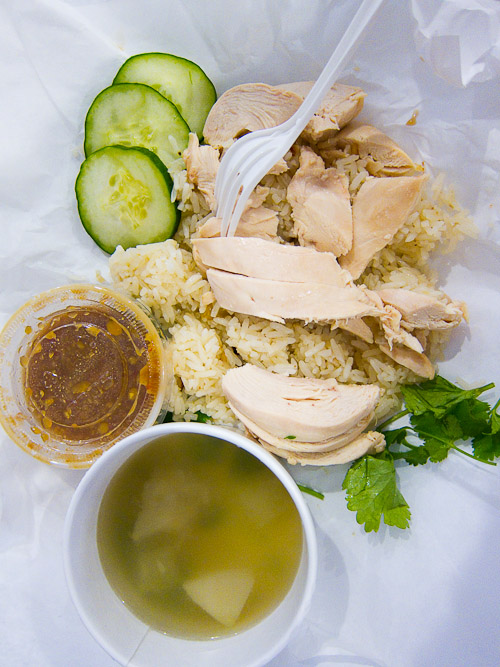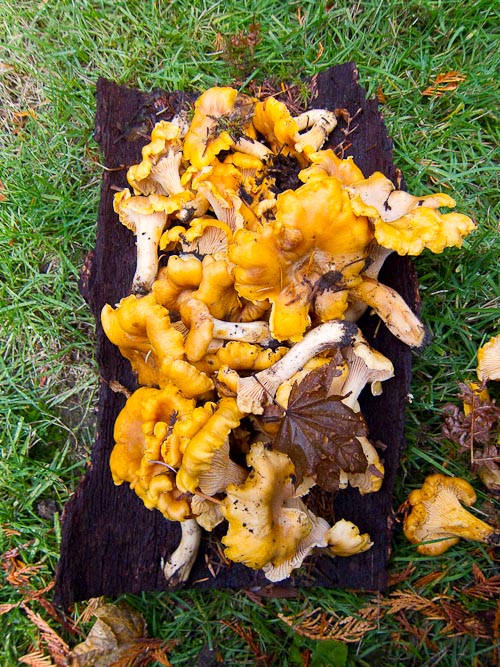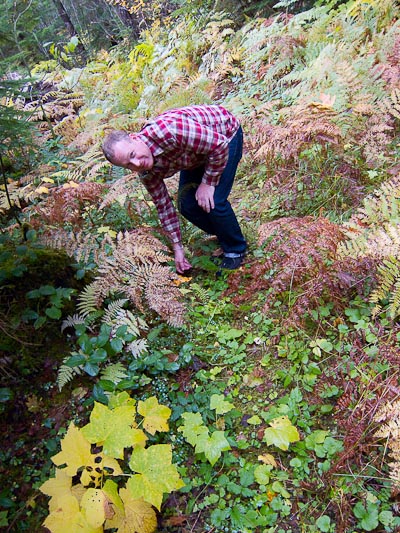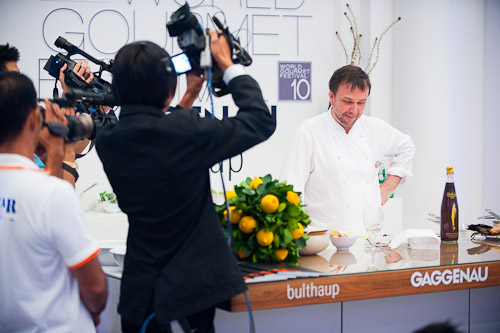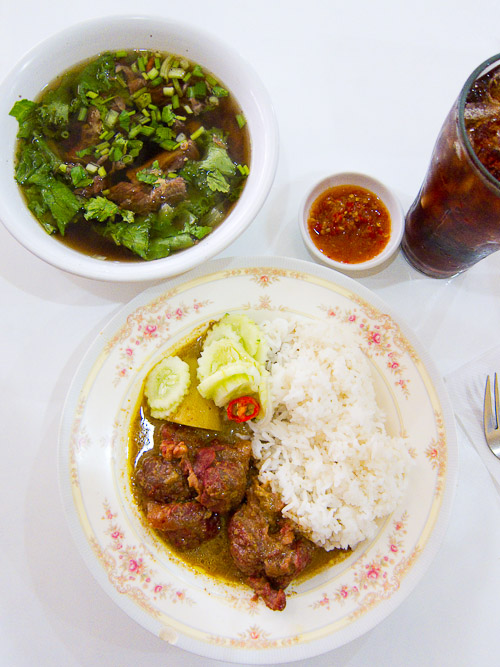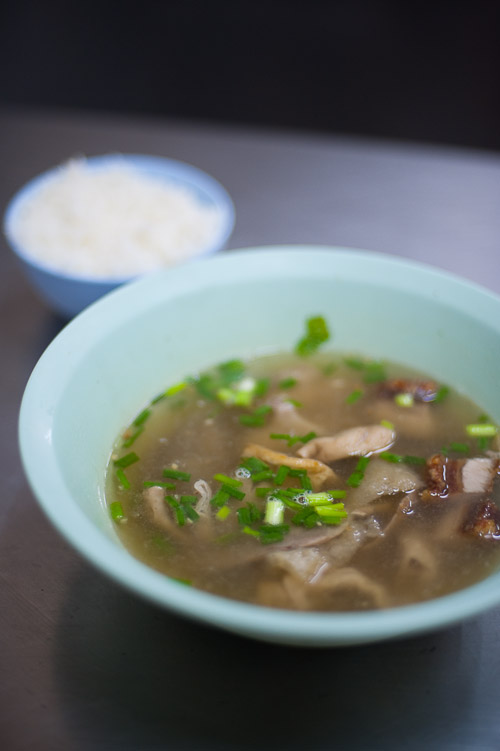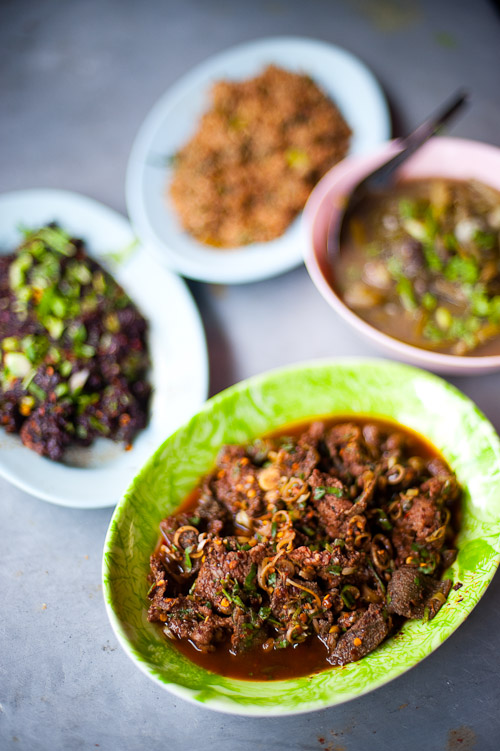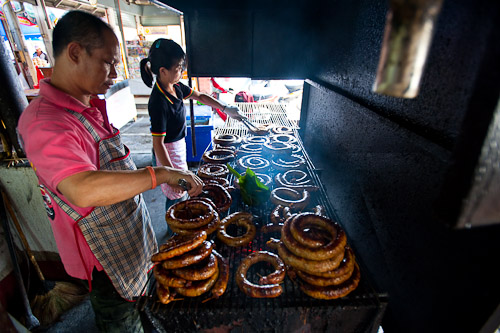 It was back in 2007, via this New York Times piece about dining in Portland, Oregon, that I first heard about Pok Pok. Only about two years old at that time, the restaurant had gone from a house-bound takeout stall selling a limited repertoire of dishes to one of the most talked-about restaurants in Oregon. Upon reading the piece, I immediately wrote an email to chef/owner Andy Ricker, who to my surprise, was already aware of this blog.
It was back in 2007, via this New York Times piece about dining in Portland, Oregon, that I first heard about Pok Pok. Only about two years old at that time, the restaurant had gone from a house-bound takeout stall selling a limited repertoire of dishes to one of the most talked-about restaurants in Oregon. Upon reading the piece, I immediately wrote an email to chef/owner Andy Ricker, who to my surprise, was already aware of this blog.
Since then, and via his numerous visits to Thailand, Andy and I become friends and have eaten and even cooked together many times. But I haven't been home to Oregon in several years and had never eaten at Pok Pok until now.
My first visit to the restaurant was during the day and my four dining companions and I ordered a decent chunk of the lunch menu. There was (pictured above, from left to right) Ike's Vietnamese Fish Sauce Wings, a moreish combination of salty, sweet, sour and meaty that is by far the restaurant's biggest selling item; Kai Yaang, grilled chicken based on a recipe and cooking method that Andy came across in Chiang Mai; Neua Naam Tok, grilled beef served northeastern-style with a rich, spicy dressing; Yam Khai Dao, a 'salad' of fried eggs; and Khao Phat Puu, fried rice with crab.
The verdict? Excellent. Obviously some people are going to question my impartiality here -- and justifiably so -- but I think even Andy would agree that I'm critical to a fault about what I eat, and although not everything was absolutely ideal (the grilled chicken needed some work, an issue which has since been corrected, and serving sizes are definitely more American than Asian), it was a solid, delicious meal and the flavours and textures were all there. The Papaya Pok Pok (not pictured) was as tasty as any som tam Thai I've encountered in Thailand, and the fried rice with crab had a spicy richness that in my opinion, ought to be exported east. My mom, who's been on several visits to Thailand and who loves the food there, was convinced, as were my other dining companions, a chef friend who lived in Thailand for a few years and my half-Thai friend. But perhaps most impressively, my dad, who has a mortal and irrational fear of lemongrass and coriander, genuinely appeared to enjoy the meal, suggesting that this is good food on many different levels.
My second visit was at night, when Pok Pok's dinner menu boasts some dishes I can't imagine you'll find anywhere else in Portland or perhaps even in the US. We had Laap Khua, northern-style fried laap; Kuung Op Wun Sen, prawns cooked in a claypot with mung bean vermicelli; Cha Ca La Vong, a delicious dish of almost buttery turmeric-marinated catfish served with fresh herbs and noodles; and a truly excellent Hoi Thawt, mussels fried in a crispy batter, a dish that, like Nong's Khao Man Gai, I'd wager is tastier and more expertly-prepared than its average Thai streetside equivalent.
Pok Pok
3226 SE Division St, Portland, Oregon
503 232 1387
11.30am-10 pm
View Thai Eats in a larger map
 ***This restaurant has closed. AB***
***This restaurant has closed. AB***




























